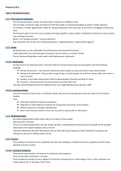Class notes
LIBF (DipFS) Unit 4 (A* Revision) - Sustainability of the financial services system
- Course
- Institution
This document covers the whole LIBF (DipFS) Unit 4: Sustainability of the Financial Services System text book. All information is condensed and has been produced by a A* student.
[Show more]



